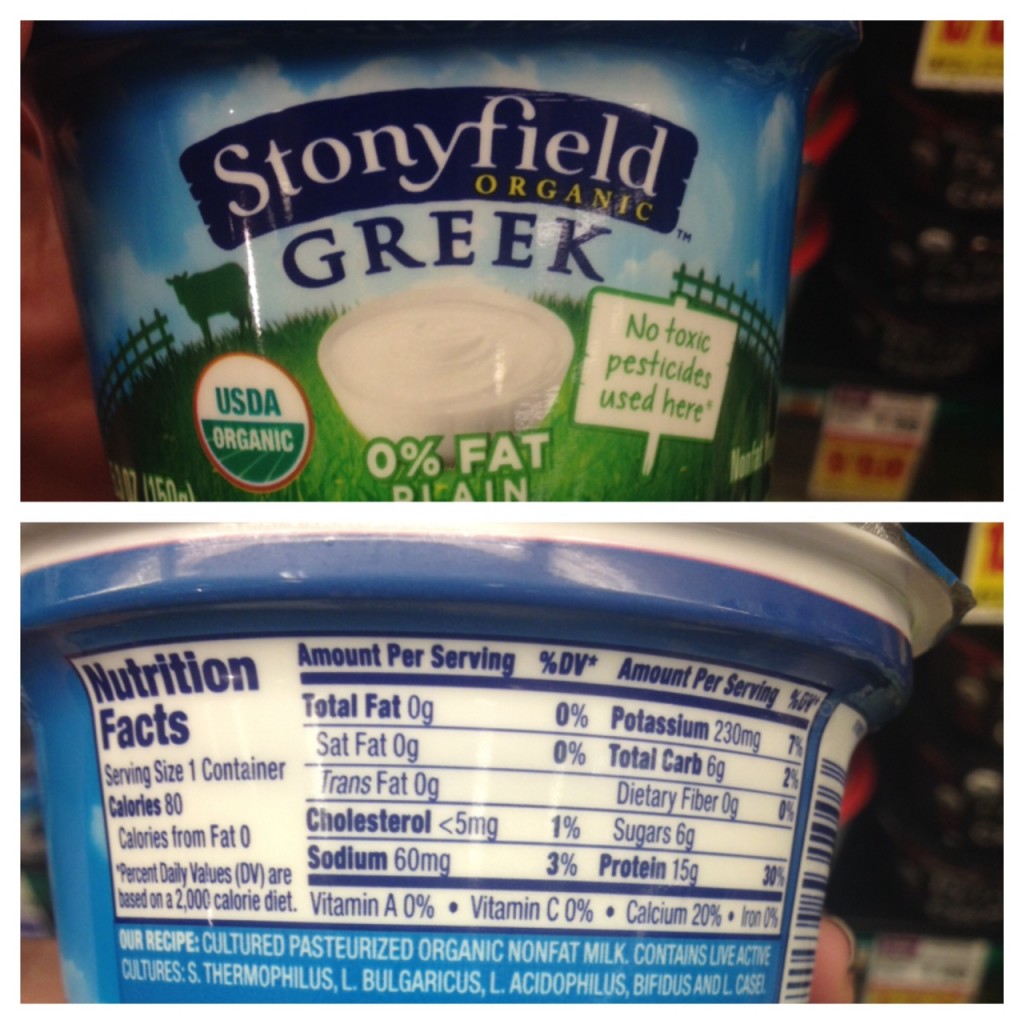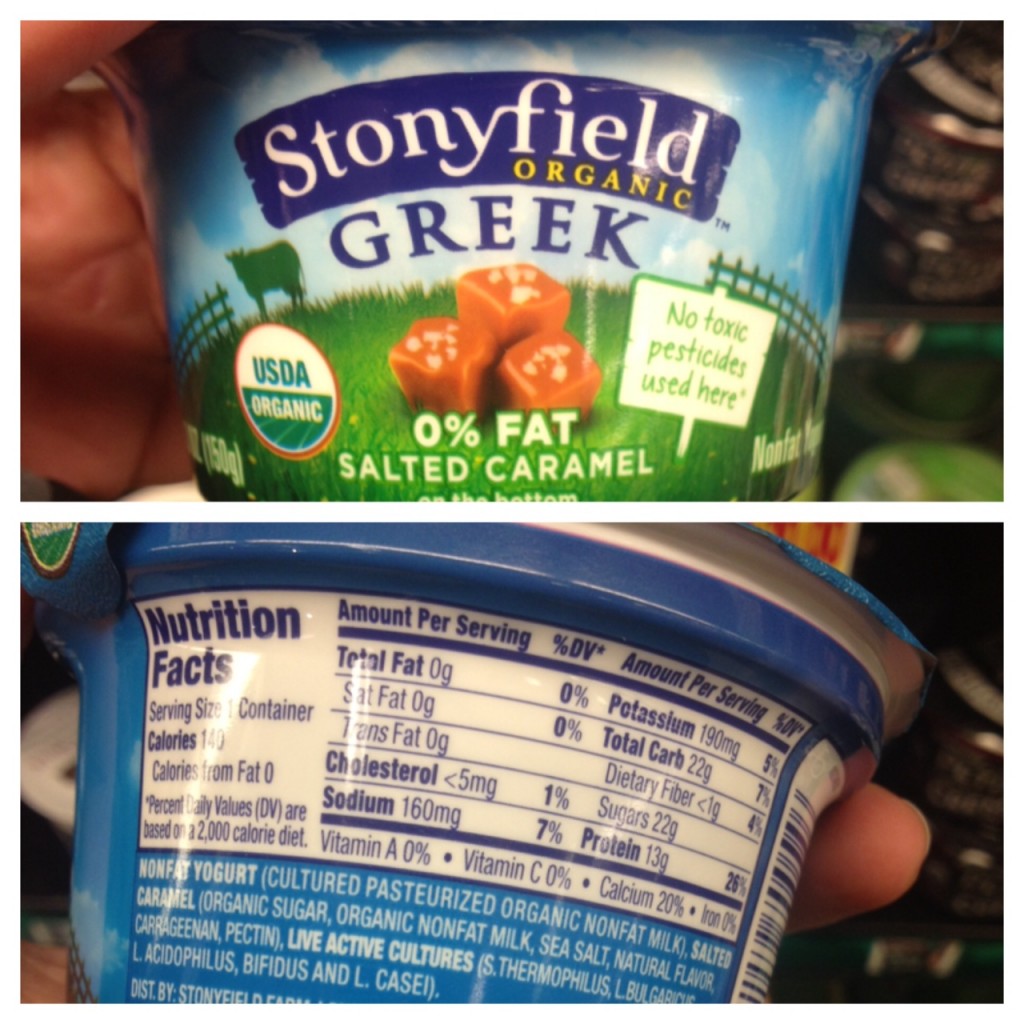I get a lot of questions about yogurt. Maybe it’s all the yogurt = health marketing, maybe it’s your personal knowledge that yogurt really is healthy and delicious, or maybe it’s the fact that many of my clients are female and therefore heavily targeted by yogurt marketing. Here are my yogurt thoughts, all in one place, though they are summarized by: eat real food.
There are many “light” brands of yogurt and 100-calorie yogurt configurations. At the other end of the spectrum, there are many seemingly healthy yogurts that are full of added sugar. Foods don’t need to be light or portioned into 100 calorie units in order to fit into your healthy lifestyle – in fact, I would recommend that you eat real, whole foods. Added sugar isn’t a great addition to your healthy eating either, so we need to find the “real food” options that are neither full of stabilizers and artificial additives nor sugar-bombs masquerading as health food.
The best yogurt recommendation I have for you: eat plain, real yogurt, topped with fresh fruit or another real food topping of your choice.
Brands I love (just my opinions – I haven’t been compensated in any way for this post):
- Stonyfield (Stonyfield Farm): I’ve been eating their organic, tasty yogurt for more than 20 years. Their yogurt is available nearly everywhere in Houston – every major grocery chain, Target, etc. – and it’s fairly priced. I like their regular and Greek varieties.
- Trader Joe’s: their European Style organic yogurts are really creamy and inexpensive.
- Nancy’s: available at Central Market, some HEBs, and some Whole Foods here in Houston, Nancy’s organic yogurts (and other products) are delicious and worth their slightly higher price point. Regular and Greek get two thumbs up.
Runner up:
- Fage – this Greek yogurt is tasty, but not organic. The little fruit and honey sidecars are fun, but there’s still the added sugar to contend with.
Other brands didn’t make the list because of their quality, sugar content, or manufacturing standards and processes. (Greek yogurt produces a lot of acidic whey that has to be dealt with somehow!)
As far as the fat content, I am a fan of low fat or full fat yogurt because the vitamins in milk (like A and D) are fat-soluble – you need to ingest them along with some fat in order for your body to make use of them. The specific portions and details will depend on your personal nutritional needs.
Even with my favorite brands, you need to keep an eye on the nutrition stats. Here’s a good test to see if your yogurt is healthy or a treat masquerading as a health food: compare the nutrition info on the plain yogurt to the info on the “fun” variety and see how the sugar content compares.
On the plain variety, we have 6g of sugar (milk has natural sugar, lactose)…
…and on the salted caramel, we have 22g. Somehow, an extra 16g of sugar joined the party!
The active cultures in yogurt are great for you, so hopefully this post will help demystify the yogurt aisle for you!




Pingback:Nutrition 101: One Important Question | tiny fitness